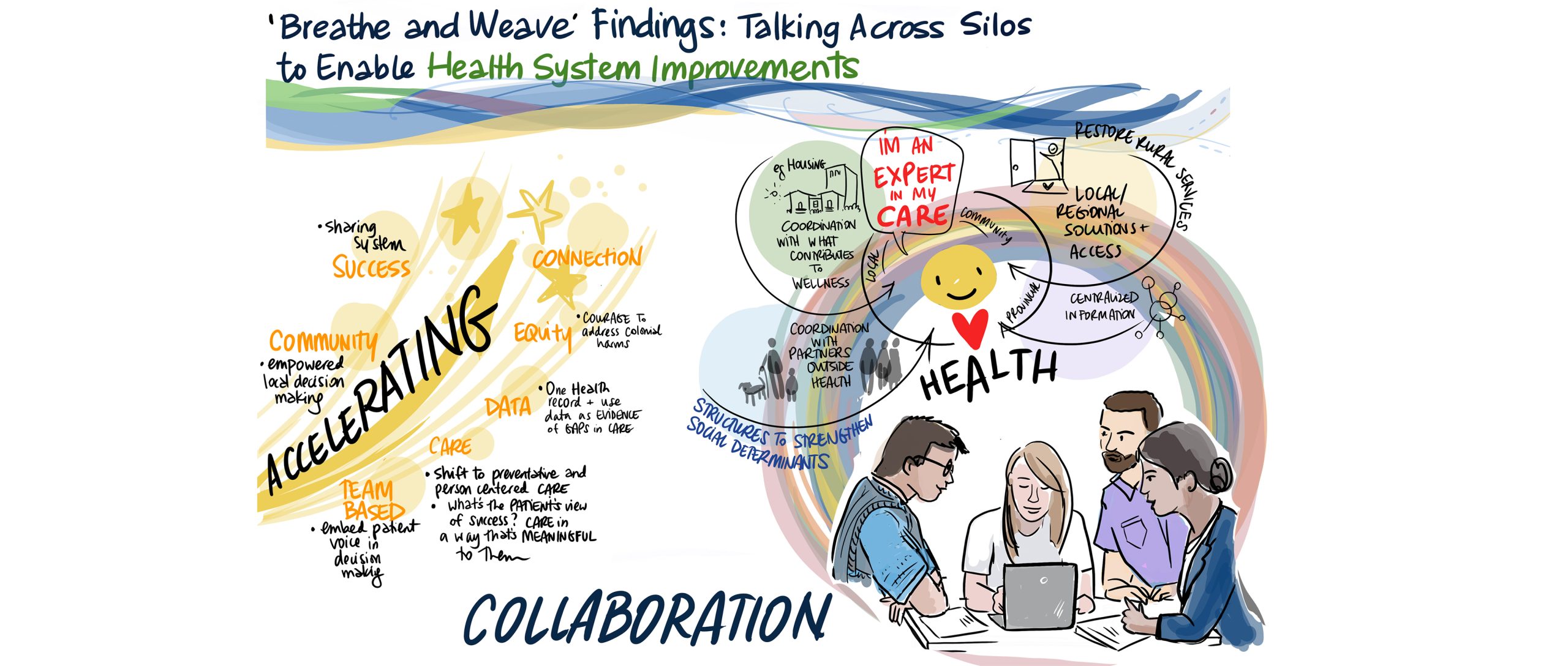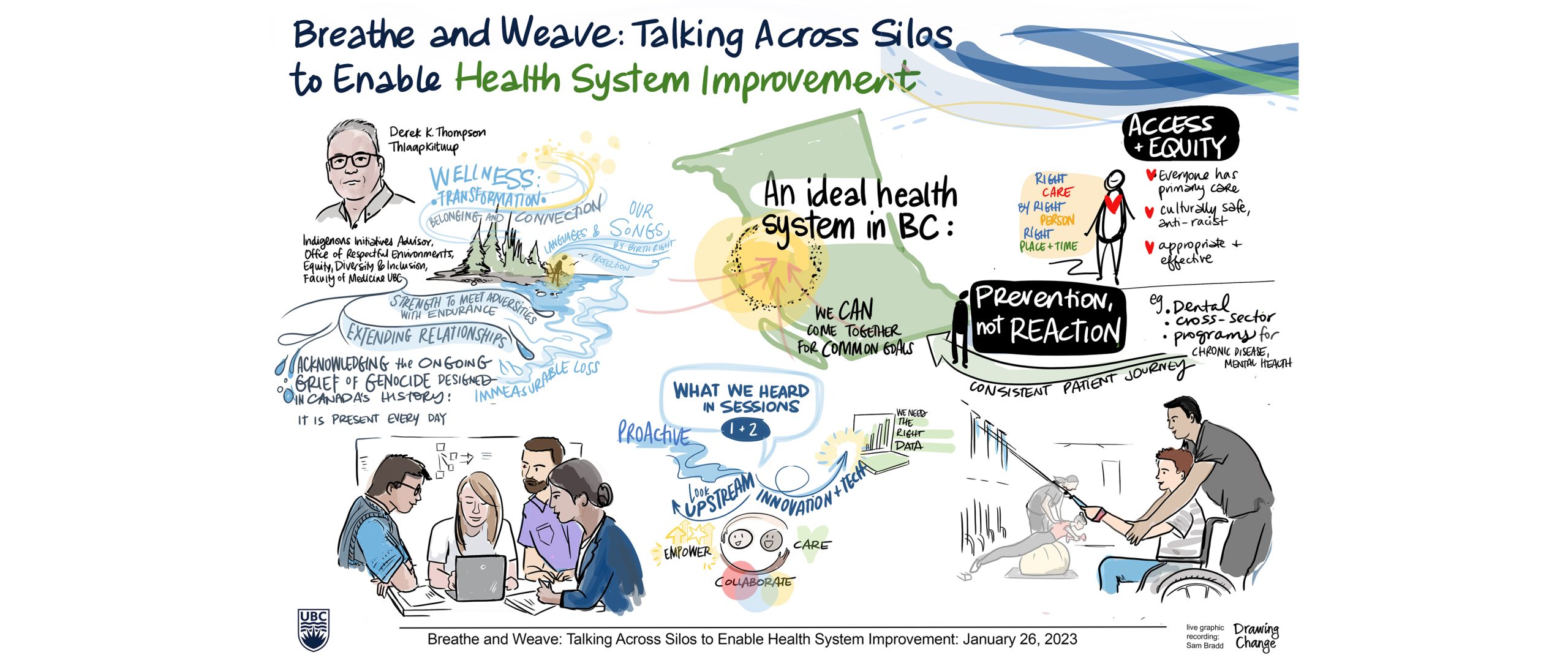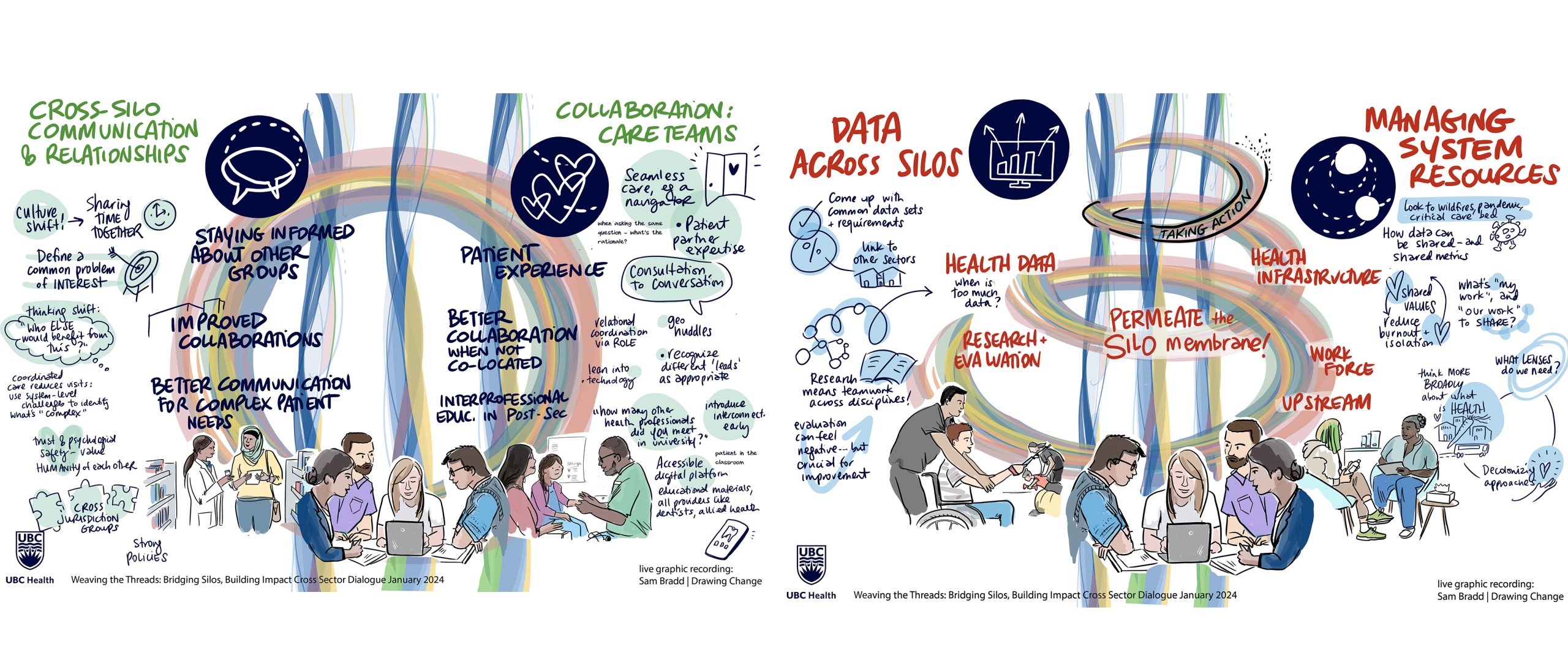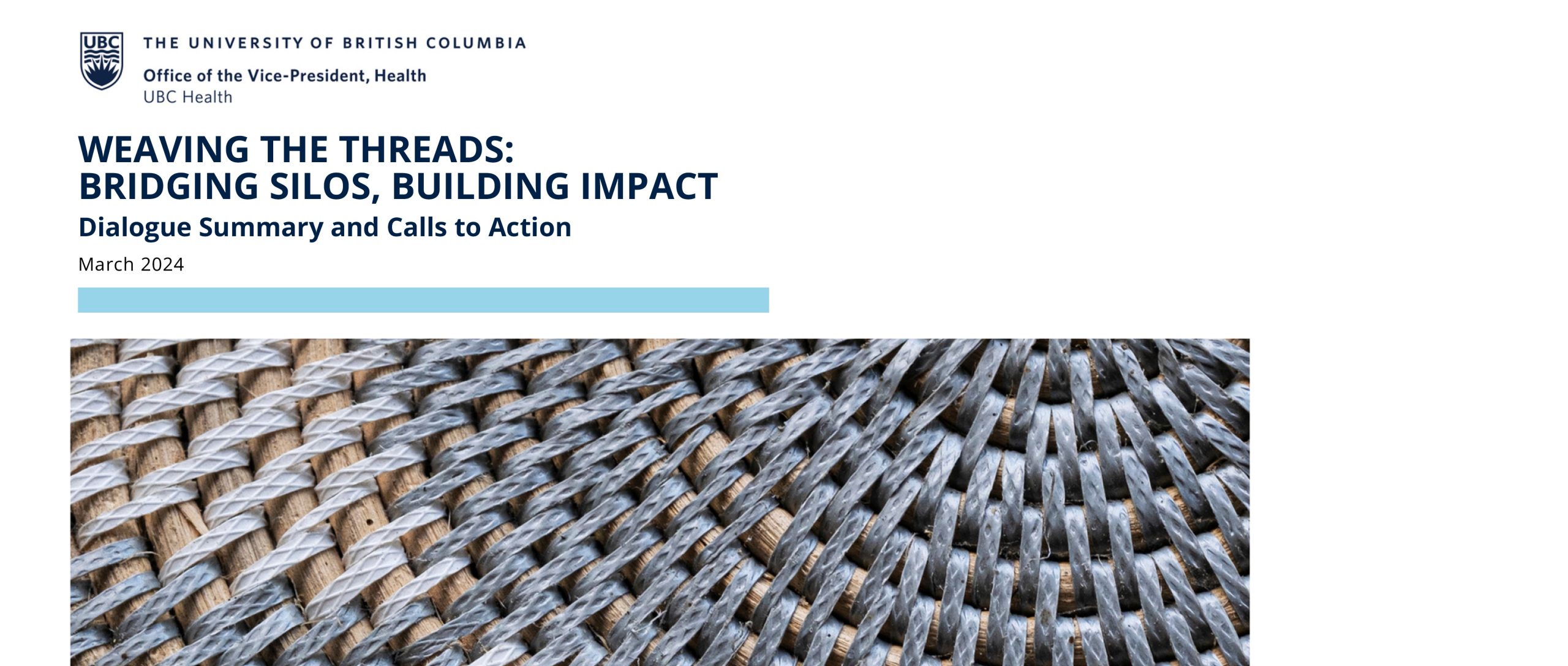Health System Cross-Sector Dialogues with Graphic Facilitation and UBC Health
Graphic recording can visualize a system shifting in real time
UBC Health convened cross-sector dialogues to discuss improving BC’s health system, and one of the major themes was silos and collaboration. Silos dominate in our healthcare system – and bring a tension. Some downsides of silos are well-known, like fragmented funding – but strangely there’s also upsides to silos, like sharing expertise and moving quickly. What would bridging silos and collaboration look like? What if silos were more open? What if the system became more permeable? And what could that look like? Visuals can help make these crucial – and often system-level conversations – feel more concrete and actionable.
Read more about the UBC Health convening and next steps here, which include the report and all of the graphic recordings.
UBC Health and a Health System Cross-Sector Dialogue
The 2024 UBC Health event, ‘Weaving the Threads: Bridging Silos, Building Impact’, explored opportunities for joint action in healthcare. It built on the theme of ‘silos and collaboration’ that emerged as a priority from the 2023 intersectoral summit, ‘Breathe and Weave: Talking Across Silos to Enable Health System Improvement’. Both events brought diverse together people to talk about what collective efforts could be, and bridging health care silos across roles, teams, organizations and regions.
“Specifically, Weaving the Threads aimed to:
- Convene participants to share and learn from different perspectives, experiences and impacts of silos in BC’s health system
- Foster connections between participants to facilitate opportunities to counteract the negative impacts of silos
- Create shared understanding of common priorities for collaborative action
- Catalyze collaborative action among participants by generating a list of opportunities that attendees can join or lead.”
Weaving the threads – and the power of being heard
I was the graphic recorder for these online meetings: my role was to listen deeply and weave the ideas into drawings. My process is to listen to small group discussion, synthesize from online note-taking documents, and focus on the insights and key themes shared back in the main plenary afterwards.
There were many layers to the events’ successes – including participation by 136 participants and 54 organizations. The small groups were well-resourced with 16 facilitators and rich thoughtful questions, and so the graphic recordings could reflect these deeper, more nuanced conversations. I shared back the imagery by the end of each session, reflecting to participants their thinking and discussions. Then, after the event the UBC Health team continued to synthesize from the breakout group notes to identify 10 calls to action:
- Care coordination and pathways
- Collaboration between community and health sector
- Cultural safety
- Data, evaluation, and practice innovation
- Educating health professionals
- Legislation
- Natural and built environments, food systems
- Peer support
- Rural communities
- Team-based care
Graphic recording is visualizing a system shifting in real time
A rewarding part of graphic recording is its strength as a process: it can respond in real-time. It can visualize the shifts in the system. When we break down silos and lean into collaboration, we make system shifts, and then we can see it happen.
In my spare time, I do a lot of weaving on a loom. I’m not sure that I want to call myself a weaver yet, because I’ll be a beginner for a very long time. Maybe my illustration work in systems/systems thinking led me to this craft, or maybe my craft led to more noticing of weaving and seeing patterns everywhere. I love when my two passions come together. In the 2024 event invitation, I drew multi-strand weaving patterns and columns that suggested silos, but where the edges were porous and threads of colour spilled out. Then, during the live graphic recording event, I used these as a circle background shape. And then something happened. During part of the final discussion, a participant described collaboration feeling like a spiral, because the collaboration had energy and momentum that moved upwards. So right in front of the group, I erased my circle shape and validated what the participant said by redrawing a spiral.
It was a small shift in the room, reflected on the page. It’s also the reciprocity of listening and being heard when we’re speaking in dialogue together. Read more about the UBC Health report and all of the graphic recordings here.




